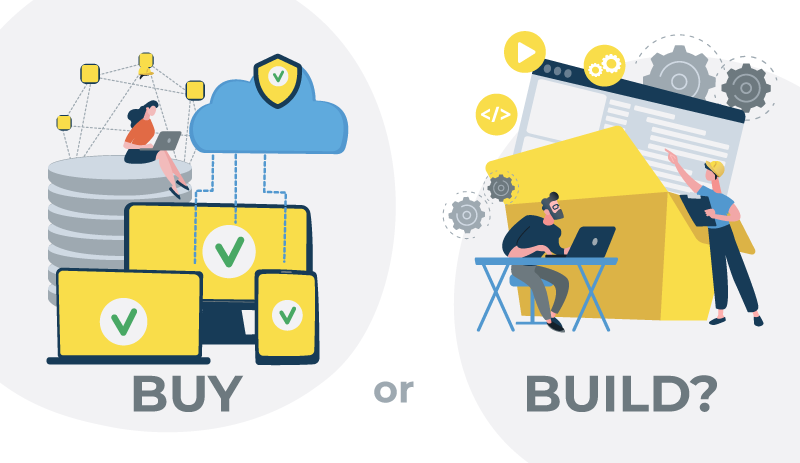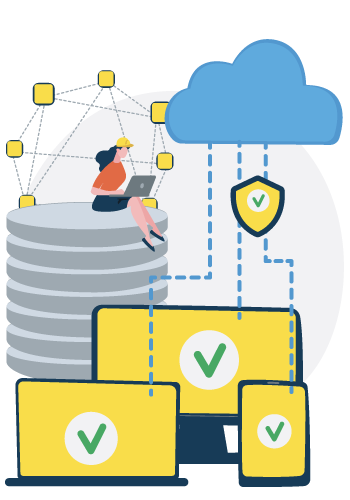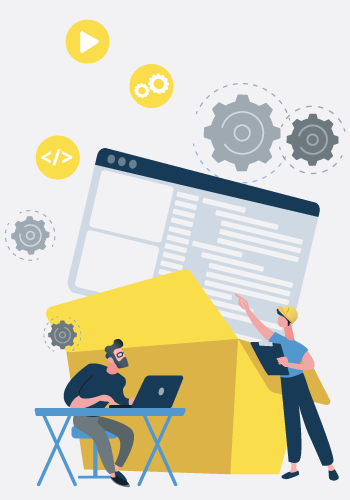Revolutionize your paper manufacturing with AI-driven optimization. Enhance efficiency, cut costs, and achieve autonomous operations like industry leaders Arjowiggins and Oji Paper. Embrace the future of smarter production!
Learn more

There comes a time in every manufacturer’s evolution when the management team is faced with this question: Do we build our own business intelligence (BI) applications, or do we buy them?
It’s a tricky question. And the answer has huge repercussions.
Future decision-making, infrastructure development, overall growth: these all hinge on which path the team decides to take.

As technology experts, we see organizations grapple with this question on a regular basis. We’re frequently called on to give our two cents. After 10+ years in the manufacturing space, we’ve homed in on four key success factors when deciding on whether to build or buy BI applications: cost, security, scalability, and data democracy.
Here are the pros and cons for each solution in these areas.
How much will it cost? It’s often the first question on every manufacturing company’s mind. Yet the answer isn’t straightforward. There are issues that impact what the final spend will be. Determining your actual costs (and potential savings!) requires looking beyond the price tag.
The biggest pro for building BI applications is the ability to leverage in-house talent. You cash in on their experience and knowledge of your business and systems. They know what needs to be included and why.
Unfortunately, custom applications could become costly later. Here are a few examples of where these added costs emerge:
It’s true that buying a business intelligence application may induce sticker shock at first. However, the pros that come with the price tag quickly outstrip this one con.
Consider these basics:

The takeaway: Built solutions are exciting but may not be the most cost-effective solution. Buy solutions take on maintenance, minimize downtime, and position your in-house team to succeed. In the long run, they may be the better bargain.
As more and more manufacturers lean on cloud computing, security is a prime concern. It’s also another area to consider when determining your best business intelligence application solution. Take a closer look.
At first glance, a built solution appears as secure as a buy solution. After all, since you’ve built it yourself, it hasn’t been exposed to outside influences like a commercial product. It may also be an on-prem or private cloud application, making it appear impenetrable. Closer inspection brings significant factors to light. For instance:
As a commercial product, buy solutions deliver state-of-the-art security measures as a standard feature. Safety is built-in, making maintenance for these third-party applications a low lift for your team.
Buy solution safety features are:

The takeaway: Safeguarding your data is an ongoing effort. Buy solutions make this upkeep a low lift. Built solutions require more time and effort to keep your systems and data well protected.
The COVID-19 pandemic demonstrated the value of being able to pivot manufacturing production and processes on a dime. It’s made scalability a hot commodity—and one of our “build or buy” decision factors.

As mentioned above, manufacturing BI applications that are built in-house can be very robust, but they may not accommodate change well. Build solutions tend to have a narrow scope. They often address current needs but don’t have much foresight for the future.
As changes present themselves, time and money must be spent to develop new app variations. This delay impedes your ability to act on unexpected opportunities, address an emergency, or simply grow as you’d like.
In short, your manufacturing company isn’t designed to pivot. It must make a long and lumbering course change every time.
Investing in a third-party BI application solution gives you an environment that supports pivoting. Whether you’re adding more equipment, reducing inventory, or incorporating a new process optimization protocol, these products have the inherent capacity to adapt quickly to your needs.
The takeaway: Historically, built solutions are not as pivot-friendly as today’s buy solutions.
First, what is democratized data and why is it important?
Data democracy is defined as the process of making digital information accessible to non-technical users without directly involving IT. It’s important because it facilitates data-driven business instead of relying on an individual’s intuition or “the way it has always been done.”
Data democracy is why BI applications are a must-have for manufacturers. BI applications are the instruments through which data democracy comes to be.
It’s also the litmus test for both “build” and “buy” solutions.
The primary attraction of building BI applications in-house is the personalization they afford. They incorporate insider insight and knowledge into your specialized manufacturing processes for a unique, one-of-a-kind output. Dashboards, reports, and metrics: all of these are tailored from the outset.
However, this customized environment may struggle to interface with other productivity applications. This can hinder overall efficiency and productivity. C-suite users and other non-tech teams are burdened with a steep learning curve. This barrier to access sets the stage for limited data democracy.
By contrast, bought solutions offer a tried-and-tested accessible environment. Invariably, your third-party vendor has solved the “interface-with-other-applications” issue, allowing for a more holistic landscape.
Designing BI applications with dashboards, reports, and metric monitoring that is more universally intuitive and user-friendly minimizes learning curves and boosts useability. In the event that customizations are necessary, they can be incorporated to account for company-specific needs.

Braincube offers the ability to add custom BI applications into your company’s Braincube IIoT Platform. This unique functionality allows you to leverage any existing applications within the same platform, furthering data democracy efforts by making them available to all your users.
In short, data democracy is built into these solutions because they are designed to be utilized by users of all skill levels.
BI applications are only successful if your users use them. Take time to determine how your BI application fits into your manufacturing technology environment. How will it interact with other applications? Does it need to? Factor this information into your build-buy decision-making.
As you can see, the build-buy decision has many moving parts. Although we feel buy solutions deliver the most value, we’re aware that choosing a vendor can be as mind-boggling and time-consuming as deciding whether to build or buy.
When all is said and done, you need manufacturing business intelligence applications that pull their weight and are easy to use.
We created our Advanced App Suite to make accessing and using your manufacturing data a seamless process. Our ready-to-use advanced applications help you meet manufacturing business goals, gain insight on your manufacturing lines, and nip challenges in the bud.
How does it stack up in our four key consideration areas? Take a look.

We save you time and money with our plug-and-play installation and easy-to-use applications. Designed to be all-inclusive, the Advanced App Suite eliminates the need for additional tools. It’s also compatible with many legacy systems, conserving costs on upgrades in other areas.

We are ISO 27001 certified, a credential demonstrating a high standard of security. Our teams undergo rigorous and continuous training, testing, and recertification to maintain this credential. We also provide interconnected platforms and applications (i.e., IIoT platform, Digital Twin) that reduce data access points.

Our Advanced App Suite is a collection of tools useful to manufacturers of all sizes and industries. Add and remove application packages as your needs and goals grow and change.

We understand data must be accessible and useful to both technical and non-technical users. Our low-code/no-code environments ensure everyone on your team can solve problems, find opportunities, and innovate in a way that’s meaningful to them.